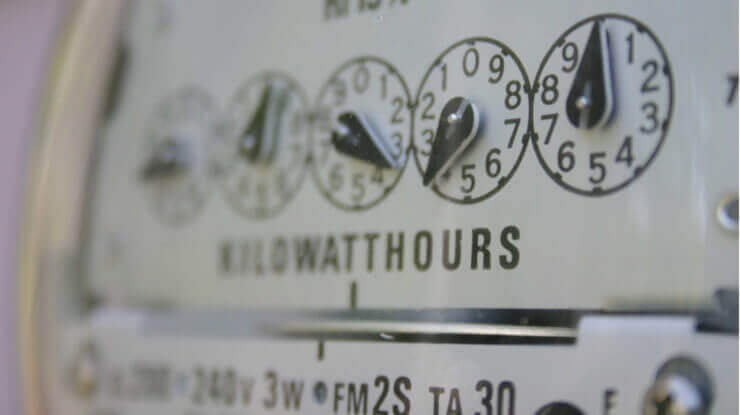When it’s time to choose an electricity plan, it can be really confusing picking your way between all the options available and the host of new terms.
One of the most common sticking points for electricity customers is what is the difference between electric delivery vs. electric supply?
They’re both vital to the success of electricity deregulation, but they play very different roles. Understanding how they fit together can make a big difference in your overall confidence as an electricity customer trying to shop for the best electricity plan.
What is an Electricity Provider?
Electricity Provider defined: Electricity providers are companies that purchase wholesale electricity from electricity generators. They then sell it at the retail level to the general public for use in homes and businesses. And, they work with the local utility company that delivers that power to customers.
State’s label electricity providers with different names such as, REPs (Retail Electric Providers), CRES (Competitive Retail Electric Service providers), or certified electric suppliers, to name a few.
In some states, like deregulated areas of Texas, you must pick an electricity supplier for your home or business. You can’t buy electricity from the local electric utility. In other states, like Ohio or Connecticut, you can stay with the local utility. But switching to a licensed electric supplier lets you lock in a fixed rate.
Every state that is deregulated requires suppliers to be licensed or certified by the state in order to sell electricity. Your state’s public utility commission website keeps an up to date list so you can easily search “electric companies near me.” That way you can be certain that you are purchasing electricity from an authorized electricity provider.
All of the electricity providers represented on ElectricityPlans.com are licensed electricity suppliers in the respective states where they do business.
Switching to one of these authorized electricity providers is easy. See our post on how to shop for an electricity plan for more info.
What is an Electric Utility?
Electric Utility defined: Electric utilities are the companies that own and maintain utility poles and power lines. They are the ones that you call when your power goes out. Utility companies are responsible for the physical delivery of electricity to your home or business. And you may even refer to this company as “the local electric company.”
TDSPs (Transmission & Distribution Service Providers) or EDUs (Electric Distribution Utilities) are common names used for local electric utility companies. You may also see the term TDU (Transmission and Distribution Utility) used. The terms are interchangeable.
Before deregulation, everyone was required to buy their electricity from their local utility company.
With deregulation, the supply of electricity was opened to competition.
And in states like Texas, the utility company can not sell electricity, you must buy electricity and shop for an electricity provider.
In some states (like Ohio or Connecticut) consumers can still choose to buy their supply from the utility company. These electric utilities must buy power to serve customers that haven’t switched to another electricity provider.
Delivery companies or electric utilities typically do not generate electricity in a state that is deregulated. However, their parent company may own and operate facilities that generate electricity. The utility may purchase electricity from their own power plants. Or they may purchase power from other wholesale electricity sources.

What’s the Difference Between Electricity Provider vs. Electric Utility?
To the general public, it’s not usually that big of a deal where the electricity comes from or how it gets to their location, just as long as it does. However, these two entities play very different roles behind the scenes.
For deregulation to function properly, they need clearly defined job descriptions.
It all starts with the power generators – the companies who produce electricity to sell on the wholesale market. The electricity providers or suppliers purchase the rights to large volumes of this electricity from the generators on the wholesale market. Then they turn around and sell it to their retail customers.
The electricity providers market the sale of electricity to the public through various offerings of electricity plans that include everything from classic fixed-rate electricity, to 100% green electricity, to bundled products that have incentives such as a Nest Learning Thermostat™ or Visa gift cards.
Electric utilities are responsible for the distribution, or delivery, of electricity to the customers who live in their service area. The electric utilities also employ the linemen that restore your power after a major weather event and repair the downed power lines and damaged poles.
Ultimately, the main difference between an electricity provider and an electric utility comes down to what they service and how.
Electricity providers deal with purchasing and marketing electricity to customers. Electric utilities handle the poles and wires that service your home. Separating these roles means customers can shop for a competitive electricity rate and still receive reliable electric service.
Electricity Supply Charges vs. Electricity Delivery Charges
In most states you will still receive your electricity bill from the local utility company. In Texas, you will receive your electricity bill from the retail electricity provider you choose.
Every month you will see a supply charge on your electricity bill. That will be for the electric supply that you either buy from your local utility company or from a licensed retail electricity provider.
And every month you will see a delivery charge on your electricity bill. This is for the transmission and distribution of electricity to your home or business.
The amount charged for the delivery of electricity is still regulated by your state’s public utility commission. These delivery rates are subject to change at least twice a year. Delivery charges pay for the maintenance and operation of the poles and wires that serve your residence or business.
Who do I Pay for my Electricity?
Depending on the state where you live, you’ll get your electricity bill from your local electric utility or your electricity provider. Either way your electricity bill generally has two line items: supply and delivery.
The supply charge is for the actual electricity used and this is paid to your electricity provider.
The delivery charge is for the transmission and distribution of electricity and this is paid to your local electric utility.
In most states you will receive these charges on one bill, and the company that collects your payment will make sure that the appropriate parties are paid for their services.
